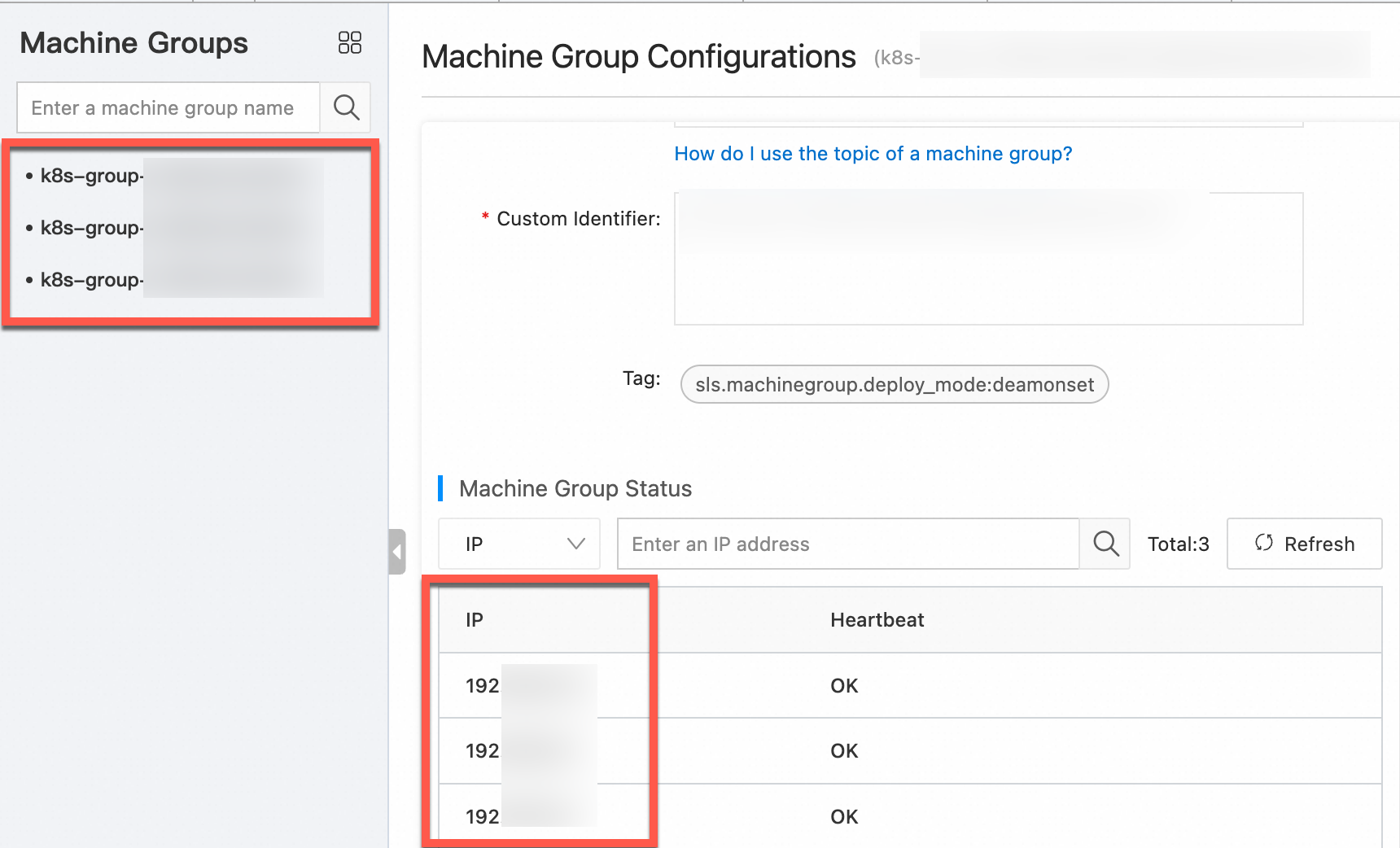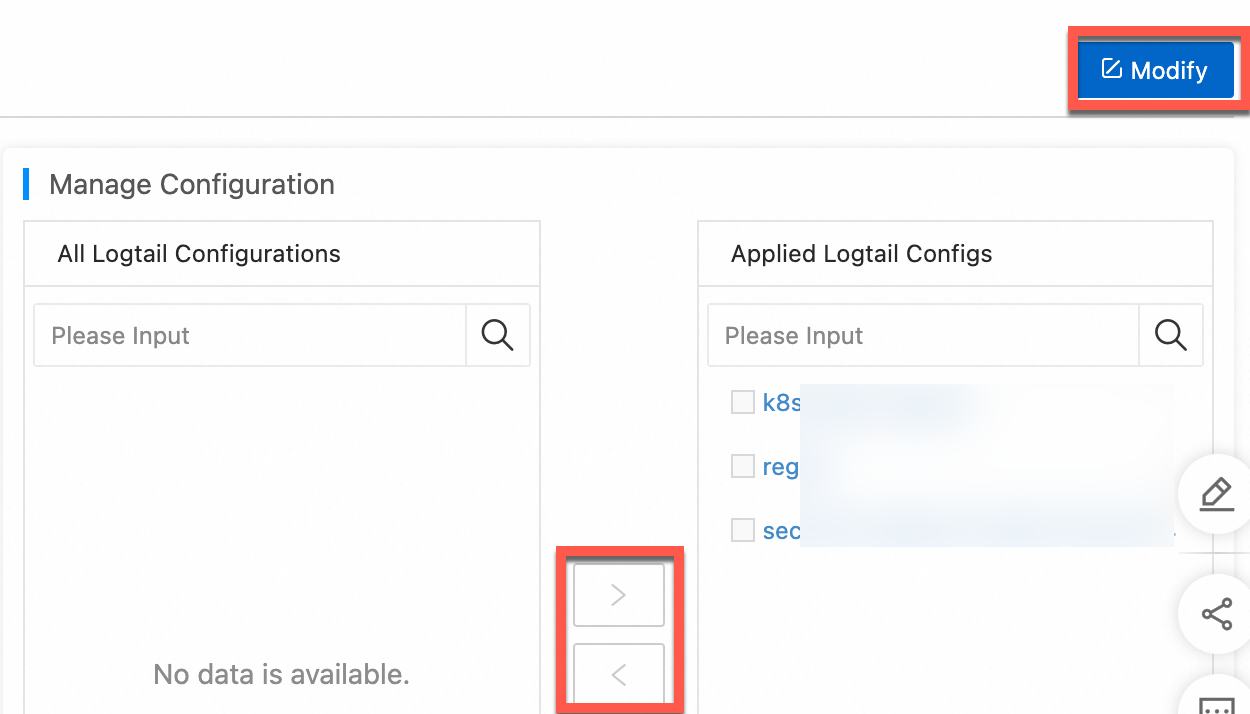This topic describes how to view machine groups, view the servers in a machine group, modify a machine group, view the status of a machine group, apply Logtail configurations to a machine group, and delete a machine group in the Simple Log Service console.
Prerequisites
Machine groups are created. For more information, see Create an IP address-based machine group or Create a custom identifier-based machine group.
View machine groups and the servers in a machine group
Log on to the Simple Log Service console.
In the Projects section, click the project that you want to manage.

In the left-side navigation pane, choose .
In the Machine Groups list, view all machine groups in the current project. Then, click the machine group that you want to manage. In the Machine Group Status section, view the heartbeat status of all servers in the machine group.
NoteAfter you create a machine group, wait for 2 minutes before you view the heartbeat status.
If the heartbeat status of a server in the machine group is
OK, Logtail that is installed on the server is connected to Simple Log Service.If the heartbeat status of a server is
FAIL, the connection between Logtail that is installed on the server and Simple Log Service fails. Follow the on-screen instructions to troubleshoot the issue. For more information, see How do I troubleshoot an error that is related to a Logtail machine group in a host environment? If the issue persists, submit a ticket.

Modify a machine group
In the Machine Groups list, click the machine group that you want to manage.
On the Machine Group Configurations page, click Modify in the upper-right corner.
Modify the configurations of the machine group.
Click Save.
Delete a machine group
In the Machine Groups list, find the machine group that you want to delete and choose .
In the message that appears, click OK.
Apply Logtail configurations to a machine group
You can create Logtail configurations in the Simple Log Service console and apply the Logtail configurations to a machine group.
In the Machine Groups list, click the machine group that you want to manage.
On the Machine Group Configurations page, click Modify in the upper-right corner.
In the Manage Configuration section, add or remove Logtail configurations for the machine group. Then, click Save.
NoteAfter you add a Logtail configuration to the machine group, the Logtail configuration is applied to Logtail that is installed on each server in the machine group. After you remove a Logtail configuration from the machine group, the Logtail configuration is no longer applied to Logtail that is installed on each server in the machine group.

 > Delete
> Delete